|
HISTORY OF No. 301 POLISH BOMBER SQUADRON
Written by Wilhelm Ratuszynski
1940
The unit was officially formed at
Bramcote on 24 July 1941, three weeks after its predecessor
No. 300 Squadron. The history of these two units run parallel for a long
time; both were formed at the same airfield, stationed together on others, were
manned by the same type and number of personnel, flew the same type of aircraft
and so on.
At it’s beginning, the 301 (‘Pomeranian’) Bomber
Squadron consisted of 10 aircrews and 172 other personnel, who freshly arrived
to England. Its first CO was W/Cdr Rudkowski, advised by British officer S/Ldr
C.G. Skinner. As matter of fact, the unit employed a number of British
personnel: adjutant, various technicians and clerical staff. As its twin
squadron, the 301 was equipped with 16 Fairey Battles and both belonged to No. 6
Bomber Group. The code letters GR where assigned to the
"Pomeranian".
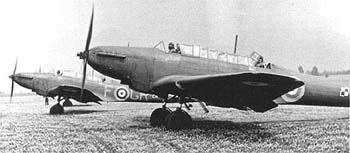
The squadron's Fairey Battles taxiing at Bramcote.
Since the invasion of southern England was still a real
threat, the training of the bomber crews was sped up, and it seemed like the
whole airfield was buzzing with round-the-clock activity. This
apparently went good, and during the C-in-C of Bomber Command, Air Marshal Sir
Charles Portal visit to Bramcote on August 3rd, one of his staff made a comment
that Poles handle Battles like Spitfires.
On the 23rd, the unit was moved to RAF Swinderby and
became part of the 1 Bomber Group. The eyes of the Bomber Command planners were
focused on invasion barges in French ports of Boulogne, Dunkirk, Ostend and
Calais. When on September 14th the unit became
operational, it immediately made its first sortie against one of these targets.
That night three crews took of to bomb Boulogne (pilot, navigator and gunner
respectively): F/Lt Florianowicz, P/O Voelnagel and Sgt T. Kowalski; Sgt Jensen,
P/O Rewski and Sgt Wasilewski; Sgt Lenczowski, P/O Hallas and Sgt Kosianowski.
From then on, the crews bomb these targets night after night.
During that time intense rivalry existed between crews of British and Polish
bomber squadrons to obliterate the biggest number of barges. Crews were
scrutinizing photographs to assess their success or failure, not taking it
lightly if the rival encroached on their game.
On 25 August 1940, the unit
suffered its first operational loss: the crew of Battle piloted by P/O Waronski
was killed when the shot-up aircraft crashed near Hornington during a force
landing.
The fall of 1940 was a glad period for Polish bomber
squadrons. They passed their initiation to the war with flying colors, and begun
to see a brighter side of what otherwise was a year of big disappointments.
In October 1940, the Polish bomber unit at Swinderby began
its reequipment with famous Vickers-Armstrong Wellington, and unit’s
personnel nearly doubled in number. P/O Janas, who in 1941/42 served as an
operational pilot in the 301, delivered the first dual trainer to the aerodrome
on 18 October.
In a middle of December the unit had its full complement
of fully trained Wellington crews. The time of relaxation followed, what proved
the Poles with a well-deserved break after hectic summer and fall. Many a crew
formed money pool to buy an automobile in a popular trend of sightseeing.
Swinderby had a small satellite aerodrome called Winthorpe,
just east of Newark. Half of No. 301 Squadron stationed there and buses,
official and private cars, maintained communication between the two aerodromes.
Bombers were housed near the Newark-Lincoln road.
The prolonged period of idleness was not beneficial for the
squadron’s readiness, and the operational flying over the continent resumed on
22 December. Three GR Wellingtons were sent to bomb Antwerp refinery. Each plane
was loaded with five 500-lb. bombs, two flares and 120 incendiaries in two
containers. The first objective for late December sorties was to test Polish
crews whether they were ready for full-scale night offensive against enemy’s
strategic targets. On 28th, next three made the same flight. In both raids no
losses were suffered. The year 1940 ended with the 301 making 42 operational
sorties in 156 flying hours.
1941
The beginning of 1941
was marked by tragic events following the raid on Bremen on the night of January
the 1st. Bremen was considered one the most difficult target to attack, and
Poles welcomed a chance to have crack at it. It was to be the unit’s first
nearly seven-hours sortie. Since the Poles to be one of the first over the
objective, their Wellingtons were bombed up each with 360 incendiaries.
The crews reached the target and dropped their loads. On the
way back to England they encountered a snow blizzard with nil visibility. Three
squadron’s aircraft crashed, killing 11 airmen, including OC Flight
"A", S/Ldr Floryanowicz. The first Wellington crashed while attempting
to land at Swinderby, but without casualties. Two other were lost at RAF
Waddington, with only one tail-gunner surviving.
For the next three weeks, the bombers were immobilized by
heavy rains, which rendered the airfield unserviceable.
The monotony was broken on 27th January by the
long-awaited visit of H.M. the King and Queen Elizabeth. The
royal pair spoke with several Polish officers who wore their best blue, and one
of who handed the Queen an arresting bouquet. On the King’s question what he
found most difficult to master in training, one Polish officer answered:
"King’s Regulations, Your Majesty."
Once the weather improved, missions resumed. The 300 and
301 took part in raids on Hamburg, Bremen, Cologne, Brest, Mannheim, Düsseldorf
and Frankfurt. Slowly, the frequency of these flights increased. Germans
beefed-up their defenses and Allies bomber losses started to mount. The Polish
squadrons were not immune and the number of the 301 crews was lost.
Wellington L7874 (GR-S) overshot the runway killing three of the crew on
21 March during training, and the entire crew of R1277 (GR-M) was lost in the
sea when the aircraft was shot down returning from an operation against Bremen.
Similar fate had R1365 off Terschelling on 19h June. Four days later R1026
crashed during landing approach with the loss of two lives near Newark after an
engine lost its propeller and its subsequent fire. On July 4, the Wellington
R1492 was lost during the raid on Bremen. Flying in that aircraft was G/Cpt
Stachon, OC of RAF Swinderby, who although disqualified from operational flying,
took every chance fill-in on missions for incomplete crews. He was killed when
the German fighter shot down the plane, while the rest of he crew became POWs.

RAF Swinderby, May 1941.
The crew of GR-O: S/Ldr Brejnak (left), F/O Lapa, Sgt Hasinski, Sgt Zaremba, P/O
Bylenski and P/O J. Wojcik.
The efforts of the squadron was not left unnoticed:
16.7.41. Command Routine Order, by Air Mshl. Sir Richard E. C. Peirse, K.C.B.,
D.S.O., A.F.C., A. 54 Notable War Services.
"The Commander-in-Chief desires to bring to the
notice of all ranks in the Command the coolness and courage shown by Flying
Officer W. Butkiewicz of No. 301 Polish Squadron. This officer was captain of a
Wellington detailed for operations on the 16th June 1941. About 40 miles off the
English coast he was attacked by a Messerschmitt 110. The rear gunner of the
Wellington replied and the pilot took evasive action. He was again attacked, but
fire was continued by the front and rear gunners until the enemy dived steeply
out of sight. Fire broke out in the rear turret and was extinguished by the rear
gunner. Despite this, the pilot determined to continue with his mission and flew
on until again attacked. The rear gunner was now unable to return the enemy’s
fire as he was burned about the face and his turret was filled with smoke.
Another fire broke out near the observer’s seat and the aircraft was
repeatedly hit. In these circumstances the pilot ordered the crew to stand by to
abandon the aircraft and jettisoned his bombs. The fire, however, was
successfully extinguished and a course set for the base.
The aircraft had suffered extensive damage and Fg. Off.
Butkiewicz had the utmost difficulty in maintaining control. The undercarriage,
flaps and emergency system were out of action, and the bomb doors would not
close. He made a safe landing. This extremely difficult feat could not have been
accomplished without the utmost co - operation and coolness on the part of the
crew."
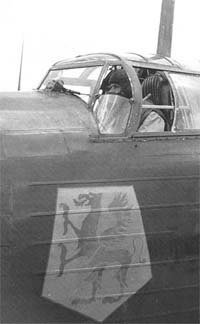
Missions continued from Swinderby until 19 July 1941 when
Hemswell (Lincolnshire) became the 301’s new base. At about this time many of
the original crews had completed their operational tours and were transferred to
training duties.
On 27 July 1941, W/Cdr Rudkowski was transferred to the
Polish General Staff HQ in London to organize air assistance for the Underground
Movement in Poland. W/Cdr Piotrowski post took over the vacated OC post.
In July 1941, No.301 Squadron flew 10 missions (62
sorties) on: Rotterdam, Frankfurt-on-Main, Mannheim, Hamburg, Le Havre and two
each on Bremen, Bielefeld and Cologne.
The rest of the year went for the squadron rather
impassively; the routine of the service occasionally interrupted by unavoidable
operational losses. The new crews settled in nicely, and evening talks and
messes were about little accidents, nudes drawn in logbooks, crewmen bloopers or
just guff.
Although Polish bomber squadrons were still growing in
strength and were yet to peak in their efforts, transfers of experienced crews
to other arms of services begun. In fall, S/Ldr Krol - one of the 301 flight
commanders - left the unit. Together with his crew they were posted to No. 138
Special Duties Squadron (It was known as Polish ‘C’ Squadron), back under
the command of W/Cdr Rudkowski. Soon others followed, until eventually the whole
unit was transferred and reorganized.
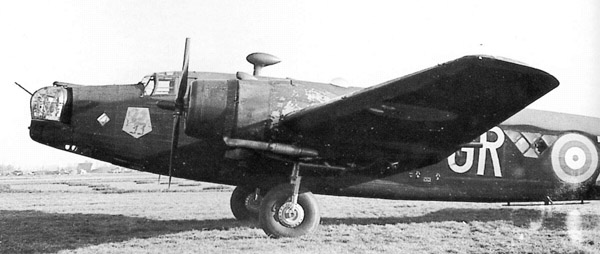
This GR-Z force landed at Maldegem (Menheim mission) on 7 November 1941.
The crew failed to destroy it, and later on the aircraft was used by Luftwaffe's KG200.
(Histoire de Guerre magazine)
In November the unit converted to Wellingtons Mk. IVs. When
in December the first DFCs were awarded among Polish crews, the 301’s W/Cdr
Piotrowski was the first one to be decorated.
In 1941, the unit totaled 418 operational sorties in 2484
hours, with 59 airmen lost.
1942
In early 1942 the bomber
offensive started to grow rapidly, and Polish squadrons’ effort sharply
increased: 177 in February, 197 in March and 352 in April. The weather in spring
of 1942 cooperated, making tasks easier. On 2 April 1942 W/Cdr Krzystyniak
became the new OC in place of W/Cdr Piotrowski.
Together with number of sorties grew list of casualties. In
April, the 30 lost three complete crews on 10th, 14th and 26th. On the night of
30/31 May the squadron was a part of the 1,000-bomber raid on Cologne. Five days
later, two crews were lost during similar raid on Essen. Read
more.
Huge effort was made when on the night of 26/27 June, as many
as fifteen GR aircraft took part in another one-thousand-plane raid on Bremen.
After the attack, the aircraft piloted by OC, was forced to ditch in the North
Sea and the whole crew was taken prisoner by a German rescue launch. W/Cdr
Brzozowski took over the command. One week later, on 3 July, his aircraft was
shot down over Bremen (12 crews reached the target), and the crew bailed.
Brzozowski with two others, were avoiding capture for three days, making slow
progress westward. Eventually, he was captured and he shared the fate of his
predecessor. Two days later, W/Cdr Kolodziejek moved in to the OC office.
In June, the 301 started to fly mine laying operations.
Targeted were coastal areas of ports of St Nazaire, Lorient, Brest, and the
Frisian Isles. However, the unit was not exempted for the regular missions over
the continent, and its crews bombed Bremen, Hamburg, Wilhelmshaven, Osnabruck,
Essen, Saarbrucken, Karlshruhe, Frankfurt, Milan, and Torino.
The squadron was suffering heavy losses. The bomber force
was still in its pupa stage and operational conditions were difficult.
Navigation was a big challenge, and bombers were forced to fly low and taking
time to find their target, presented plenty of opportunities to be intercepted.
It was very rare for the unit, that its crews didn’t encounter German night
fighters, and on few occasion only, no SOS signals from over the North Sea were
received. There wasn’t a single GR Wellington in that period that at one point
or another wasn’t damaged over the target. In June 1942 the unit made 111
operational sorties.
On 22 July, four aircraft were lost and the
"Pomeranian" had only six complete crews, including two fresh rookies
crews from the 18 (Polish) OUT. The flow of volunteers to the bomber force
virtually run-out, what caused a big concern for the staff of PAF Headquarters.
On 25 September, when the squadron was primarily engaged in
mining entrances to enemy’s ports, W/Cdr Dabrowa assumed the command.
Intensity of these operations increased even more on October, in a wake of the
upcoming landing in North Africa. Rarely, the squadron took part in attacks on
targets in Germany.
Starting from early November, the 301 flew almost
exclusively mine-laying sorties, which were less dangerous than those over
inland Germany. It could muster only 11 crews, including two under training and
two incomplete without navigators. The lack of reserves for training continued,
what together with exceptionally heavy losses in 1942, forced planners to
consider a withdrawal of No. 301 squadron from the Bomber Command. The decision
was to be taken soon.
In 1942, the squadron totaled 706 operational sorties in 4066
flying hours. It lost 82 airmen killed, 5 missing and 25 taken prisoners.
1943
When the shortage of operational
crews continued in early 1943, inevitable happened: on 31 March 1943, No. 301
Polish Squadron suspended its bombing operations, and the next day it was
officially disbanded. In its operations with Bomber Command, the unit flew 7,367
operational hours in 1,260 sorties. Its crews dropped 1,428 tons of bombs and
laid 222 tons of mines. The casualties were 203 killed, missing and POWs.
The remaining force formed a new Flight "C" attached to No. 138
Special Duty Squadron, stationed at Strandishal near Newmarket and equipped with
Handley Halifax bombers. Poles were to keep seven crews and aircraft (4
Halifaxes and 3 Liberators maintained wholly by Polish ground crews); the rest
of the personnel were transferred to other units. S/Ldr Krol commanded the
flight.
The Polish aircrews flew with No. 138 Squadron since 9th October 1941, and
took off on its first mission on 7th November. They were to parachute equipment
and three instructors to the Home Army in Poland. The flight like this had never
been done before and although the mission was successful, powerful head wind
forced the crew to land in Sweden for lack of fuel. The crew were interned, but
escaped and returned to England. Both W/Cdr Rudkowski and S/Ldr Krol were among
them.
As the new flight Poles carried out supply sorties to Norway, Austria and
Czechoslovakia. One Polish crew was lost during a flight to France (Halifax no.
DT 725, piloted by F/Lt Lawrenczuk) 18 on April 20th, the first casualty
suffered in the new service.
Soon Poles began regular flight to Poland. The route led through Denmark,
which in fall 1943 was loaded with AA defenses. In September, on 16 aircraft
send to Poland by No. 138 Squadron, 7 were shot down over Denmark, while the
rest was damaged. Two of those were Polish. This called for a change of route,
which then led through Sweden and was some 250 km longer and eliminated the use
of Halifaxes. Flying over the edge of Sweden the crews were fired upon by the
Swedish AA artillery, which made sure that its shells exploded few thousands
feet below Liberators. Around that time it was decided to base future operations
to Poland in Italy. The decision was dictated by the lack of Liberators and
strategic advantage of the location where Allies already landed. The Flight’s
Halifaxes could be use again.
The flight was sent to the Mediterranean and on 4 November 1943 installed
itself at Sidi Amor near Tunis. A month later it moved to Brindisi, Italy, where
for security reasons it was re-titled No. 1586 Special Duty Flight, and became
part of the 334 Special Duties Wing. However, in its internal communiqués and
correspondence, the Polish staff still referred to it as No. 301 squadron.
Supply sorties to occupied Poland resumed while the flight was still in
Tunis, from where 6 flights were made. Some of this flight ended in Brindisi,
where the crews remained permanently.
In 1943 the Polish flight made 135 (27 to Poland) sorties to occupied
countries. Since the end of 1941 till the end of 1943, the total Polish losses
in 138 Squadron were 56 airmen killed and 23 taken prisoners.
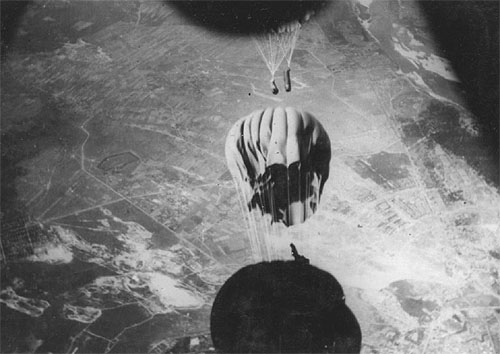
Supplies down.
1944
On 5 January, four crews were sent to Poland and two of those were killed
attempting landing in Italy in adverse weather. The crews of Liberators BZ 949
and BZ 589 piloted by F/Lt Paszkiewicz and by F/Lt Bohuszewicz respectively were
the first losses suffered by the unit in Italy.
The unit used three different routes to Poland, depending
on the location of a drop point in Poland and the position and strength of the
enemy’s anti-aircraft defenses. Distinctive geographical features helping in
navigation were also considered.
On March 26th, General Sosnkowski visited the Flight and decorated six of its
members with the fourth class Vituti Militari and sixteen ground staff with the
Cross of Valour. In March the Flight made 24 sorties, what was the highest
monthly figure.
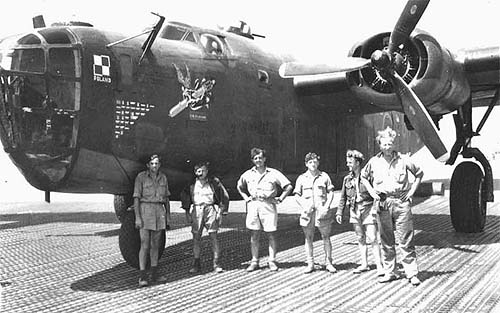
One of the few flight's B-24 Liberators. May/June 1944.
This picture was taken probably at Trigno where 318 Polish squadron was
stationed. The aircraft was to force land there due to lack of fuel. First on
left is F/Lt Szostak, one the best pilots of the unit. Notice the PSP (pierced
steel planks) covering ground.

A huge effort was made in April, when the squadron carried out 100 even
supply sorties to Poland and other countries. May 1944, proved even more
productive with 138 flights, 72 to Poland. In became apparent that the six
aircraft operated by the flight were not able to cover ever-growing demand for
supplies to the Polish Home Army. The discrepancies between
the Polish general staff and the grand strategy of the Allies became a
hindrance in obtaining more aircraft and postings for the Flight. The direct
help the unit was giving to the fighting Poles in their country awarded its
members with great moral satisfaction and provided a motivation for a daily
work. Although many held a grudge against the Air Ministry for not allowing more
means for help to Poland, they showed an even temper and disciplinary problems
were very few. Soon their discipline was awarded as thanks to the persistent PAF staff
the Air Ministry agreed to expand the 1586 Polish Flight’s establishment.
In June operations to Poland were suspended due to the short nights.
That month however, without loss, the Flight carried out 169 sorties to
Yugoslavia and North Italy. This was achieved thanks to new Flight’s
complement of 12 aircraft (9 Halifaxes and 3 Liberators); six Halifaxes were
received in mid June.
On 15 June, S/Ldr Krol was sent for a well-deserved rest, and was replaced by
S/Ldr Arciuszkiewicz. Read his recollection on his first sortie to Poland.
Left: Impressive tally of drops suggests this 'heavy'
might've been considered lucky.
In July the flights to Poland resumed (37 monthly total), but task became
more difficult. Soviet Union denied a free passage over the territory it now
occupied, and Germans beefed up their air defenses particularly near Budapest,
and in the Krakow, Nowy Sacz and Deblin in Poland. Never the less, the Polish
crews continued to fly over areas occupied by the
Red Army, fortunately avoiding incidents involving Russian air force. Altogether
136 supply sorties were made that month.
When on 1 August 1944 the Warsaw Uprising begun, the 1586 had only 6 crews
and 8 aircraft, nearly all of which were battered and not suitable for long
dangerous missions; the replacement Halifaxes, were ferried in by British crews
from Algier already in a bad shape. Most of the crews were young and
inexperienced, while the rest almost completed their tour, sometimes even second
or third. Thus, when the time called for greatest effort to help fighting
Warsaw, the 1586 Flight was unable to deliver sufficiently.
Read airmen
recollections.
On 4 August all the available crews - seven in number - made the first supply
sorties to Warsaw. Polish crews considered their highest duty to carry help to
their countrymen, regardless of the danger and predicaments. That day, another 7
machines from British No. 148 Squadron took off for Warsaw. For them, the
outcome of this flight was tragic. Five British Halifaxes were shot down, and
another was lost during crash landing. All aircraft were badly shot up and only
three Polish bombers dropped their load.
The operation itself was always technically extremely difficult, calling for
absolute precision. Warsaw was only partially held by Poles and bellowing
columns of smoke obscured arranged dropping points. Drop was usually done from
the altitude of 300/400 feet as a minimum for containers’ parachutes to open.
Sometimes, even a very low flying didn’t help and the precious supplies could
not be dropped at all. The southern approaches of Nowy Targ, Tarnow, Krakow,
Nowy Sacz area, were by then crammed with flak and losses where inevitable,
especially since the planes had to fly over them twice.
After this fiasco, Air Marshal Sir John Slessor suspended all the flights to
Warsaw. Only after Polish violent protest did he change his decision. Four days
later all available Polish crews made a very successful supply mission suffering
no loses.
The returning aircraft were always more or less damaged by flak or fighters,
and ground crews were greatly overworked. In
August, of all 97 flights to Poland, 80 were to Warsaw, and the Flight lost 8
planes, seven over the fighting city. September was any better, and another 8
crews were lost. Despite the replacements, at one point the Warsaw Uprising, the
unit was 13 crews below establishment. Telling is a fact that only two crews
survived the whole two months period. There were only few crews who made as many
as three sorties over Warsaw, and among them, interestingly enough, was 54 year
old Air Commodore Ludomir Rayski, DSO, former C-in-C and one of the creators of
the Polish Air Force.
On 18 August, the American Eighth Air Force, sent to Warsaw 107 B-17s loaded
with 1284 supply containers, filled mostly with arms and ammunition. All except
three reached their dropping zone, but only 30% of their aid fell into Polish
hands. Flying fortresses landed in Soviet occupied territory, and by northern
Italy returned to England.
By the end of August, the unit was brought up to strength. Although the
ground crew efforts were those on a verge of heroism, it was impossible to keep
the number of serviceable planes up to the required level.
On 1 September, the Flight had 49 aircraft, of which only twelve were
serviceable. There was no way to keep the level of operations from the previous
month and only 17 sorties were made in September.
That month the Polish Home Army in Warsaw received assistance delivered also by
British squadrons, which made 116 flights there and alarmingly lost 19 crews.
When in early October the ill-fated Warsaw Uprising collapsed, the flight
continued to drop supplies for the Polish Home Army, operating behind German
lines. Twenty-seven such a sorties were flown by the unit, which but that time
had the official title "Defenders of Warsaw". Poles also flew to
Austria, Yugoslavia, Czechoslovakia, Bulgaria and Crete. During three-year
period, between 1941 and 1944, Allies dropped total of 554 tons of supplies for
Poland, while Greece received 5,796 tons, France and Yugoslavia twice that
number.
On 7 November 1944, the flight was officially turned back into the full
squadron, and once again became No. 301. It retained its special
duty character.
In November, the 301 made 68 sorties including 15 to Poland. In December the
figured totaled 66 (20 to Poland), and the last mission to Poland was flown on
the 28th.
1945
In January 1945, the squadron logged much fewer amount of sorties.
Only nine were made. The February was somewhat busier month, with 86 supply
missions flown.
On 28 February 1945, due to the changes situation in Europe, the 301 was
withdrawn from the Special Duty Operations, and transferred to the Transport
Command.
|
The unit’s total war effort sums up:
- in Bomber Command - 1204 operational sorties in 6782 flying hours; 1700
ton bombs dropped on enemy targets; loosing 156 airmen killed, 5 missing, 25
POWs.
- in Special Duty Operations - 1335 operational sorties in 6041 flying
hours; 1577 ton of supplies and 693 agents dropped over occupied countries;
loosing 167 killed, 18 missing, 49 POWs. |
On March 15th, the 301 "Defenders of Warsaw" moved back to England,
and located itself at RAF Blackbush in Suffolk. In few days rotations among the
personal were done, and the squadron was brought to its full strength. New,
Vickers-Armstrong "Warwick" Mk III aircraft were received, and crews
begun to train on them.
As the World War Two was about to finish, the unit started transport flights,
mostly to Holland, France and Italy.
In December 1946 it was disbanded.
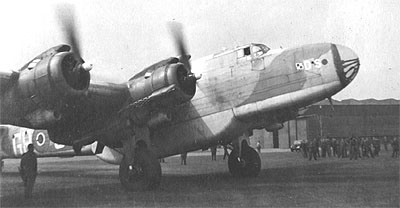
Probably Blackbush, 1945. One of the unit's Halifaxes.


|







